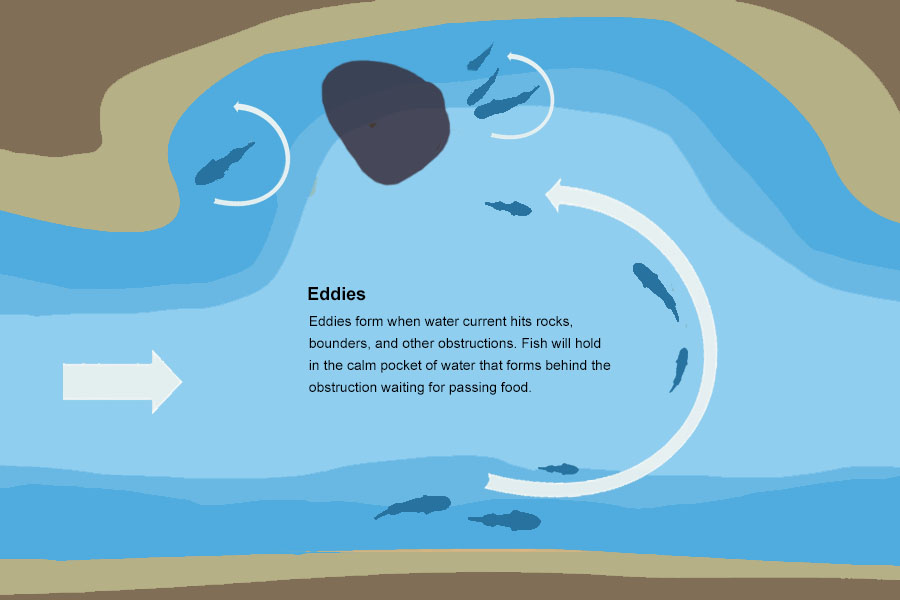An eddy is a patch of water that is churning in the opposite direction of the river’s current. It’s usually caused by a large rock, tree or sand bar that is disrupting the normal flow of water. The object causes the water in these areas to curl back on itself and flow in a circular pattern.
It’s easy to find eddies if you know the telltale signs. One way to locate an eddy is by looking for things that can get caught in the vortex – like bubbles. If you see bubbles on the surface of the water, it could be a sign that there’s an eddy underneath.
There are other things that can get caught in eddies, such as bugs and small fish. Bigger fish like to hang out in these areas because it’s a good place to find an easy meal. Since the currents here tend to be a less rough than the nearby rapids, it’s a good place for fish to sit and wait for food to come along.
Sometimes, you can find smaller eddies behind large rocks in the center of a stream. When fish are swimming up or down the river, they often use these areas to rest or look for food.
How to fish a river eddy
It doesn’t matter if you choose to fish in a small stream or big river – the technique you’ll use is the same. The most effective method is to use the current generated around the eddy to guide your lure, fly or bait into it.
Pick your fishing location based on where you notice most of the food flowing. Fish don’t want to work too hard for their food; therefore, if you let the current push your bait into the eddy, you’ll have a better chance of getting it in front of a hungry fish’s mouth.
If you decide to use a spinning lure, like a rooster tail, you’ll have a hard time controlling it in the churning waters of an eddy. Here are some pointers to help you position yourself correctly:
- Stand perpendicular to the river’s current, then cast your lure into the rapid next to the eddy.
- Wait a few seconds with a slack line while you let your lure sit.
- Then, jerk your lure slightly and let it slide slowly over the spot as you start to reel in your line. Do this several times in different areas around the eddy.
A dead drift is the best method to use If you’re using bait or a sinking fly, such as a nymph with a strike indicator. For this method, you’ll cast into the current next to the eddy and let your bait slowly drift into it using the natural flow of the water. Try casting in different areas around the eddy to see if you can find any fish.




